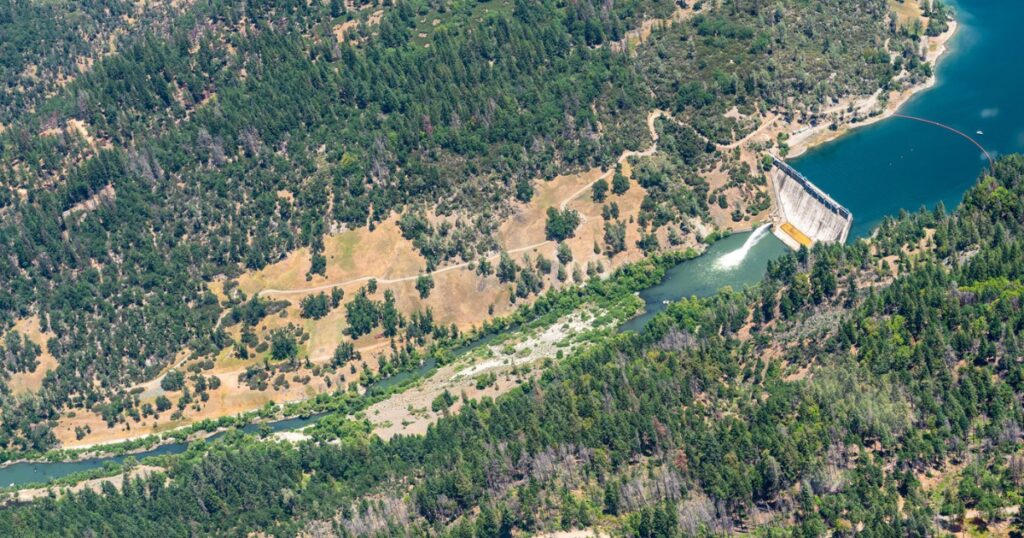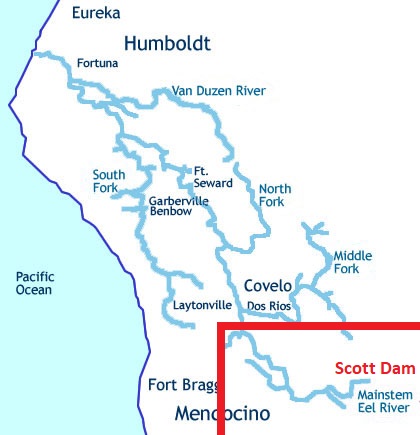After years of discussion and debate, dam removal on the Eel River appears to be moving forward.

Scott Dam, Lake Pillsbury and the upper Main Eel River. Photo: CalTrout
The dams in question are the Scott Dam, which forms Lake Pillsbury, and the Cape Horn Dam downstream, where diversions from the Eel River to Sonoma County have taken place for decades. Some diversions will still be allowed, but they’ll have to take place in winter when there is natural flow in the Eel River as summertime releases from Lake Pillsbury will not be possible.
Some wintertime diversions may be diverted to Lake Mendocino or used to recharge groundwater, but the Sonoma County Water Agency and farmers in the Potter Valley will need to take other measures to make up for a reduction in use of the Eel’s flow. Impressively, the Sonoma County Water Agency appears wholly cooperative and prepared to embrace the challenge.

The Eel River and its many forks flow northward through Mendocino and Humboldt Counties.

Scott and Cape Van Horn, the only dams on the river, no longer produce hydropower but do provide water supply to Potter Valley farmers and the Sonoma County Water Agency.
The purpose of removing the Eel’s dams is the same as removing dams further north on the Klamath River – to help revive salmon and steelhead populations. While the Eel’s removals principally affect water supply, the Klamath’s removals affect hydropower production.
Restoring Hetch Hetchy Valley in Yosemite National Park will affect both water supply and hydropower. As we laid out in Yosemite’s Opportunity: Options For Replacing Hetch Hetchy Reservoir, San Francisco can assure itself no loss of water supply (or even increase it), by investing in groundwater recharge, wastewater recycling or enlarging Calaveras Reservoir.
We have estimated that San Francisco will lose about 350 gigawatt-hours a year when Hetch Hetchy is restored – or about one half of the hydropower lost when the Klamath Dams are removed. (For readers who don’t think about gigawatt hours on a daily basis, if everybody in the United States used a toaster over for one hour, the total power consumption would be about 350 gigawatt-hours.)
It is refreshing to see the general consensus that the environmental benefits of dam removals on both the Klamath and Eel outweigh the costs of replacing water and power supplies. We think the same is true at Hetch Hetchy. To date, the San Francisco Public Utilities Commission shows no inclination that it will cooperate with restoration of Hetch Hetchy as the Sonoma County Water Agency has on the Eel.
We look forward to the day when San Francisco, willingly or not, embraces the water and power alternatives that will make it possible to restore Hetch Hetchy to its natural splendor.
